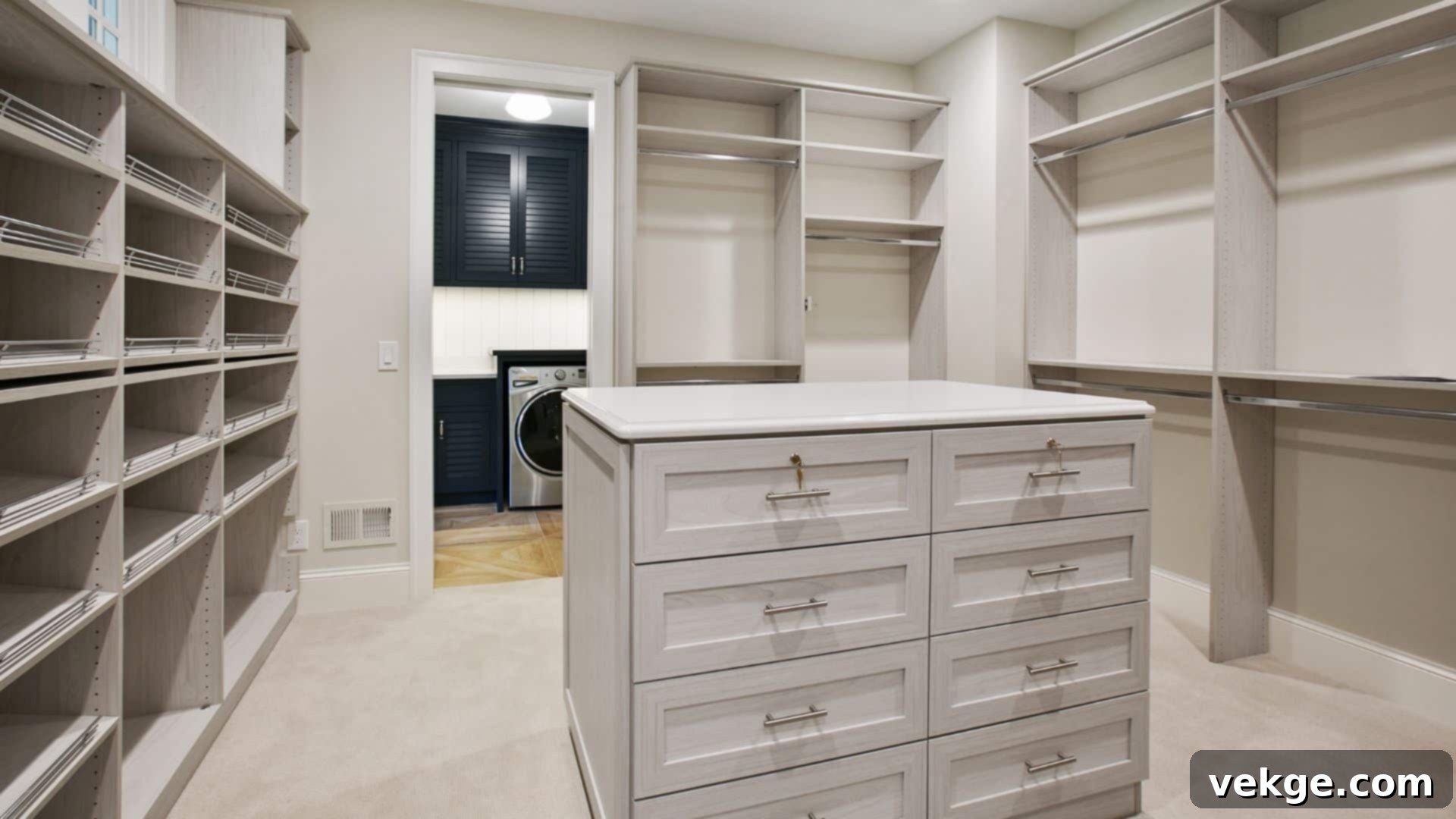Designing Your Dream Walk-in Closet: A Comprehensive Guide to Luxury & Organization
Designing a walk-in closet that perfectly blends high-end style with unparalleled functionality is a transformative process. It’s more than just creating a space for clothes; it’s about curating a personalized sanctuary that elevates your daily routine and celebrates your unique collection of belongings. From your most cherished garments to your favorite pair of comfortable leopard slides, every item deserves a designated, easily accessible spot. This comprehensive guide will navigate you through essential design strategies, innovative storage solutions, and common pitfalls to avoid, ensuring your walk-in closet is a beautifully organized extension of your personal style.
1. Understanding Your Space and Needs
Before any design decisions are made, a thorough understanding of your available space and personal requirements is paramount. This foundational step ensures that every inch of your walk-in closet is utilized efficiently and thoughtfully.
Assessing the Layout and Dimensions
Precise measurements are the cornerstone of any successful closet design. Don’t just measure the floor; meticulously document the height, width, and depth of the entire area. This includes any architectural nuances such as recesses, columns, beams, or sloped ceilings that might influence the placement of custom storage units. Understanding these details from the outset prevents costly redesigns and ensures a perfect fit for all components.
- Measure Precisely: Begin by accurately measuring the entire closet area. Record the dimensions of not only the floor space but also any existing architectural features, such as alcoves, structural pillars, or variations in ceiling height. These details are critical for planning custom cabinetry and shelving.
- Door and Window Consideration: Pay close attention to how existing or planned closet doors swing. If you opt for hinged doors, ensure they don’t obstruct drawers or hanging rods. Sliding or pocket doors can be excellent space-saving alternatives. Similarly, note any window placements, as they might affect where shelves can be installed or where natural light might fade certain fabrics. Window treatments like UV-protective blinds might be necessary.
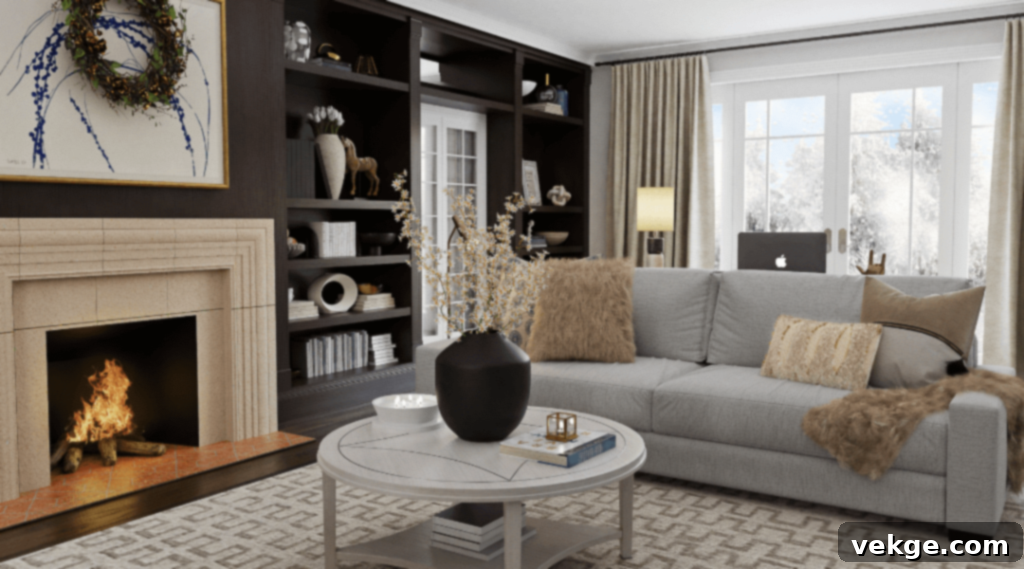
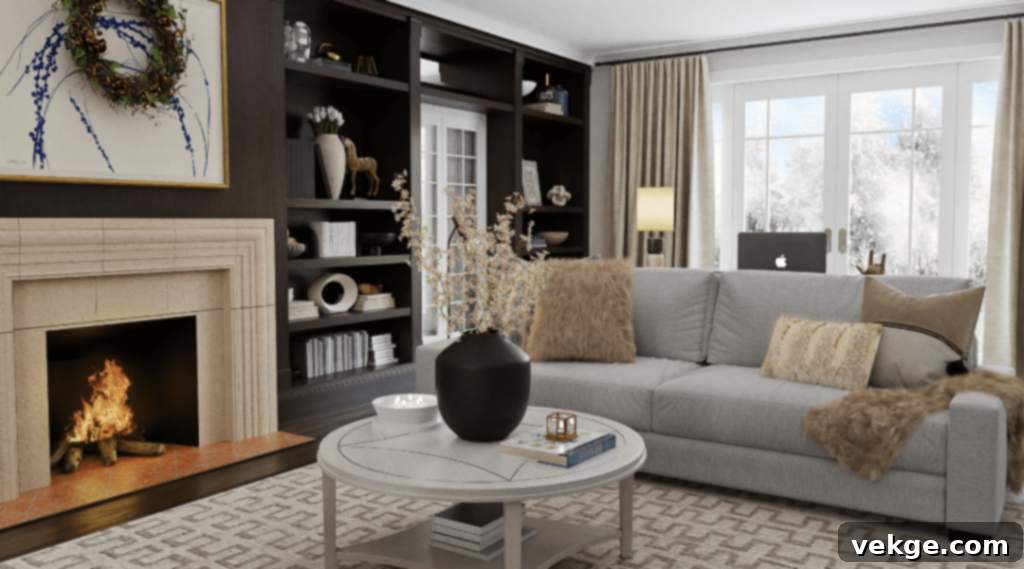
Optimizing Storage for Maximum Efficiency
Effective space optimization involves a strategic balance between vertical and horizontal storage, tailored to your specific wardrobe. Thinking creatively about how your items are stored can unlock significant potential within your walk-in closet.
- Vertical vs. Horizontal Storage: Maximize vertical space by incorporating elements like double-hanging rods for shirts and skirts, high shelves for seasonal items or luggage, and floor-to-ceiling cabinetry. Utilize pull-down rods for easy access to higher storage. Horizontal space, often best for drawers and lower shelving, should be reserved for frequently accessed items like folded clothing, undergarments, and accessories.
- Adjustable Shelving and Rods: Investing in adjustable shelving and hanging rods offers unparalleled flexibility. As your wardrobe evolves or your needs change (e.g., accommodating a new collection of boots or bulkier winter wear), you can easily reconfigure the layout. This adaptability ensures that your closet remains functional and prevents the common issue of wasted space, providing perfect spots for everything from sweaters to multiple pairs of comfortable footwear, including those leopard slides.
- Personal Inventory Assessment: Take stock of what you own. How many shoes, bags, dresses, suits, and folded items do you have? This inventory helps dictate the required amount of hanging space, shelf depth, drawer count, and specialized storage solutions. Don’t forget items like jewelry, ties, belts, and scarves, which often require dedicated organizers.
2. Design Considerations for a Luxurious Aesthetic
Beyond functionality, a walk-in closet should be a visually appealing space that resonates with your personal style and complements your home’s overall aesthetic. Thoughtful design choices can transform a utilitarian space into a luxurious dressing room.
Aesthetic Cohesion and Materiality
The visual harmony between your walk-in closet and the adjoining bedroom creates a seamless and inviting environment. Consider the overall theme and mood you wish to evoke, whether it’s modern minimalist, classic elegant, or bold and eclectic.
- Theme Matching: Ensure your walk-in closet’s design echoes the décor of your bedroom. Consistent color schemes, material palettes, and architectural details can create a cohesive flow, making the closet feel like an integrated extension of your living space rather than a separate, detached room.
- Color and Materials: The choice of colors and materials significantly impacts the closet’s ambiance. Neutral tones like whites, grays, and natural wood finishes offer versatility and a timeless appeal, making your clothing stand out. Alternatively, bold colors or rich textures can inject personality and drama. Consider durable yet elegant materials like high-gloss laminates for easy cleaning, solid wood for warmth and luxury, glass elements for a touch of modernity, or even mirrored surfaces to expand the perception of space.

Lighting Solutions for Visibility and Ambiance
Good lighting is paramount in a walk-in closet, not only for practical purposes but also for enhancing the overall luxurious feel. It ensures you can clearly see your clothing’s true colors and details.
- Choosing the Right Lighting: Opt for a layered lighting approach. This typically includes ambient, task, and accent lighting. LED strips are incredibly popular for their energy efficiency, slim profile, and a wide range of color temperatures (from warm white to cool daylight), perfect for illuminating shelves and hanging rods. Puck lights or recessed lights can highlight specific items, while motion-sensor lights offer convenience and energy savings.
- Proper Placement: Install task lighting directly above hanging rods and inside drawers or cubbies to illuminate their contents, making it easy to find specific items. Ambient lighting, such as a stylish ceiling fixture or recessed cans, provides overall illumination. Accent lighting, like small spotlights on display shelves, can highlight prized possessions, adding a touch of sophistication. Ensure all lighting replicates natural daylight as closely as possible to avoid misjudging clothing colors.
3. Storage Options and Organization Strategies
The heart of any functional walk-in closet lies in its well-chosen storage options and the intelligent principles guiding its organization. Custom solutions can address unique needs, while systematic organization ensures lasting order.
Customization Tips for Tailored Storage
Customization is key to transforming a generic closet into a highly efficient and personalized space, perfectly adapted to your wardrobe.
- Flexible Installations: Beyond adjustable rods and shelves, consider specialized inserts and built-in features. Velvet-lined jewelry trays, pull-out scarf and belt racks, and dedicated cubbies for handbags can prevent damage and keep items visible. Built-in cabinetry with soft-close drawers is ideal for folded items, offering a clean, streamlined look.
- Corner Solutions: Corners are often overlooked and underutilized spaces. Maximize them with innovative solutions like custom carousel units, revolving shoe racks, or L-shaped hanging systems that provide deep storage for bulkier items or a collection of footwear, including additional pairs of your favorite leopard slides.
- Dedicated Shoe Storage: Whether you have a vast collection or just a few cherished pairs, dedicated shoe storage is crucial. Options include angled shelves, individual cubbies, clear shoe boxes, or even rotating shoe racks to keep footwear organized, protected, and easily visible.
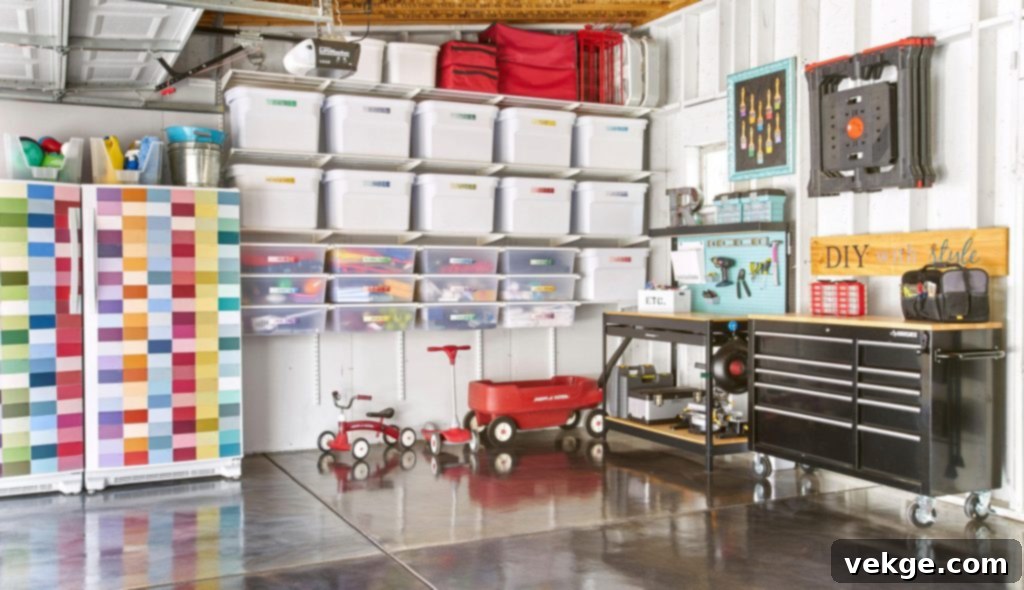

Organizing Principles for Lasting Order
A beautifully designed closet is only as good as its organization system. Adopting consistent principles ensures your closet remains a functional and enjoyable space.
- Drawer vs. Hanging Space: Achieve a balanced allocation of space. Long hanging areas are essential for dresses, coats, and full-length garments. Double-hanging rods work well for shirts, skirts, and folded trousers. Drawers are perfect for items that benefit from folding, such as t-shirts, sweaters, undergarments, and accessories. Use drawer dividers and inserts to keep smaller items neatly separated.
- Item Categorization: Organize your clothes and accessories by category (e.g., all shirts together, all pants together), then sub-categorize by season, occasion (work, casual, evening), or even color. This method simplifies the process of finding what you need quickly, reduces decision fatigue, and maintains a visually appealing, organized aesthetic within your luxury walk-in closet.
- Seasonal Rotation: Implement a system for rotating seasonal clothing. Store off-season items in breathable garment bags or clearly labeled bins on high shelves or in a separate storage area to keep your active wardrobe clutter-free and easily accessible.
4. Practical Elements and Long-Term Maintenance
A truly exceptional walk-in closet integrates practical features that enhance daily usability and simplify upkeep, ensuring it remains a functional and beautiful space for years to come.
Accessibility Features for Effortless Use
A well-designed closet should prioritize ease of access, making every item a breeze to retrieve and put away, regardless of where it’s stored.
- Easy Access Design: Design your closet with ergonomic considerations. Frequently used items should be at eye level or within easy reach. Incorporate pull-out shelves for easy viewing of folded items, pull-down rods for high-up storage of occasional wear, and soft-close drawers for silent and smooth operation. Ensure adequate aisle space so you can move around comfortably without bumping into shelves or items.
- Seating and Mirrors: Integrating a comfortable seating option—whether it’s an elegant ottoman, a built-in bench, or a stylish chair—adds a touch of luxury and provides a convenient spot for dressing, putting on shoes (including your comfy Cloud Slides), or simply pausing. A full-length mirror is an absolute must for outfit checks, and consider a three-way mirror for a comprehensive view of your ensemble.
- Valet Rods: A pull-out or fixed valet rod is a small but mighty addition. It provides a temporary hanging spot for dry cleaning, outfits being prepared for the next day, or items that need to be put away.

Maintenance Insights for Enduring Beauty
To preserve the pristine condition and functionality of your walk-in closet, select materials wisely and adopt a routine maintenance schedule.
- Cleaning-Friendly Materials: Opt for materials that are durable and easy to clean. Laminated surfaces, painted wood, or metal fixtures are typically low-maintenance and can be wiped down easily. Avoid highly porous materials in high-traffic areas if easy cleaning is a priority. Dust-resistant finishes can also reduce the frequency of deep cleaning.
- Regular Upkeep Tips: Maintain the elegance of your space with simple habits. Keep a small handheld vacuum or duster within the closet for quick cleanups of dust and debris. Regularly wipe down surfaces and mirrors to prevent buildup. Good ventilation, perhaps through a small fan or open window (if available and weather permitting), can also help prevent mustiness and protect fabrics.
5. Common Mistakes to Avoid in Closet Design
Even with the best intentions, certain pitfalls can undermine the functionality and aesthetics of your walk-in closet. Being aware of these common errors can help you create a truly optimal space.
Overcrowding and Underutilization
The desire to maximize storage can sometimes lead to an overcrowded and inefficient space. Conversely, not leveraging the full potential of your closet can be a missed opportunity.
- Space Maximization vs. Overcrowding: While utilizing vertical space is crucial, avoid the temptation to fill every single inch of your closet with storage units. Well-spaced shelves, hanging areas, and clear sightlines are vital for keeping your clothes visible, accessible, and preventing a cluttered look. An overly packed closet makes finding items difficult and can even damage garments.
- Less is More (and Smart Storage): Regularly declutter your wardrobe. Keep only items you genuinely wear and love within your primary closet. Store out-of-season clothes, infrequently used formal wear, or sentimental items in separate, well-organized storage boxes or alternative storage areas. This ensures your main closet remains a functional and enjoyable space for your everyday essentials.
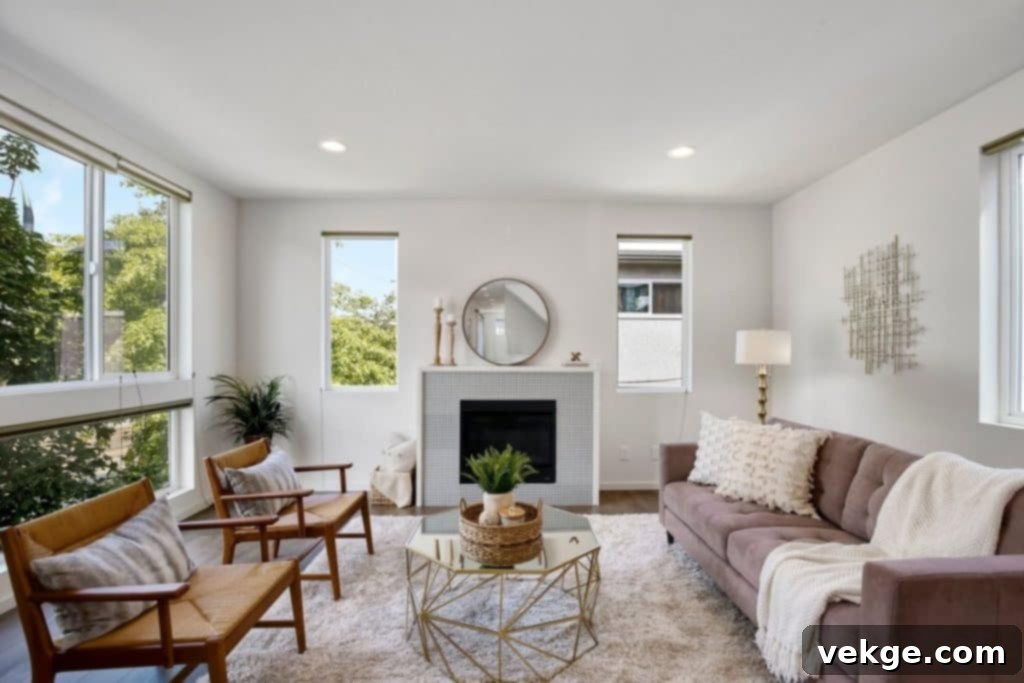
Neglecting Accessibility and Flow
A closet that looks good but is difficult to navigate quickly loses its appeal. Functionality and ease of movement are non-negotiable for a luxury experience.
- Movement Space: Always ensure there is ample room to move comfortably within your walk-in closet. You should be able to turn, bend, and reach items without feeling cramped or obstructed. A general rule of thumb is to allow at least 3 feet of clear aisle space, especially in front of drawers or hanging rods.
- Accessible Design: Plan your closet layout so that all areas are easily reachable. Avoid placing frequently used items behind other bulky storage. Consider varying heights for hanging rods to accommodate different garment lengths, and ensure drawers pull out fully without obstruction. A well-thought-out design ensures that your closet remains a pleasure to use, day in and day out.
6. Advanced Tips for the Ultimate Luxury Closet
For those seeking to push the boundaries of walk-in closet design, incorporating innovative technologies and high-end accessories can elevate the space to an unparalleled level of luxury and convenience.
Innovative Additions and Smart Integration
Embrace modern technology to create a truly futuristic and highly functional walk-in closet.
- Smart Technologies: Consider integrating smart closet features for enhanced convenience. This could include automated drawers or shelves that glide open with a touch, LED lighting systems that adjust color temperature and brightness based on time of day or garment selection, or even motion-activated lighting for effortless illumination. Climate control systems within the closet can protect delicate fabrics from humidity or extreme temperatures.
- Gadget Integration: High-tech additions can include sophisticated electronic rotary tie and belt racks that present your accessories at the push of a button, automatic shoe racks that optimize space, or even integrated charging stations for your devices. These features not only conserve space but also add a touch of modern luxury and efficiency to your daily routine.
- Integrated Laundry Solutions: Consider built-in hampers that blend seamlessly with your cabinetry, or even a compact, concealed ironing board or steaming station to keep your clothes looking impeccable.
Enhancing Usability with Premium Accessories
The right accessories can dramatically improve the usability and organization of your walk-in closet, making every interaction a pleasure.
- Removable Accessories: Utilize high-quality, removable bins, adjustable drawer dividers, and retractable shoe racks to customize storage as your needs change. These flexible solutions allow you to reconfigure your space effortlessly, ensuring it always meets your current requirements. Think of velvet-lined inserts for delicate items, or clear acrylic dividers for easy visibility.
- Multi-purpose Hangers and Hooks: Invest in high-quality, multi-functional hangers. Velvet-flocked hangers prevent clothes from slipping, while multi-bar hangers can store several pairs of pants or skirts efficiently. Specialty hooks are perfect for bags, hats, or even displaying statement jewelry, ensuring every item has its dedicated place and is beautifully presented.
- Mirror Features: Beyond a simple full-length mirror, consider a tilt-out mirror that can be hidden when not in use, or a mirror with integrated lighting for optimal dressing conditions. Some high-tech mirrors even offer virtual try-on features or display weather forecasts.
Key Takeaways for Your Luxury Closet Project
Designing your dream walk-in closet is a journey that thoughtfully balances exquisite aesthetic choices with highly practical, personalized storage solutions. Every detail contributes to the overall functionality and enjoyment of your dressing area, from the strategic placement of hooks for your favorite leopard slides to the installation of cutting-edge smart lighting systems.
Remember to approach this project with a clear understanding of your personal wardrobe, a meticulous eye for measurements, and an appreciation for how design choices influence daily convenience. Embrace these essential strategies and be mindful of the common pitfalls as you plan your space. Don’t be afraid to customize and tailor these suggestions to perfectly suit your unique personal style, lifestyle, and evolving needs.
Ultimately, a well-designed luxury walk-in closet is far more than just a place to store clothes. It is an investment in your home, a reflection of your discerning taste, and a personal sanctuary that enhances your daily routine, serving and inspiring you every single day.
